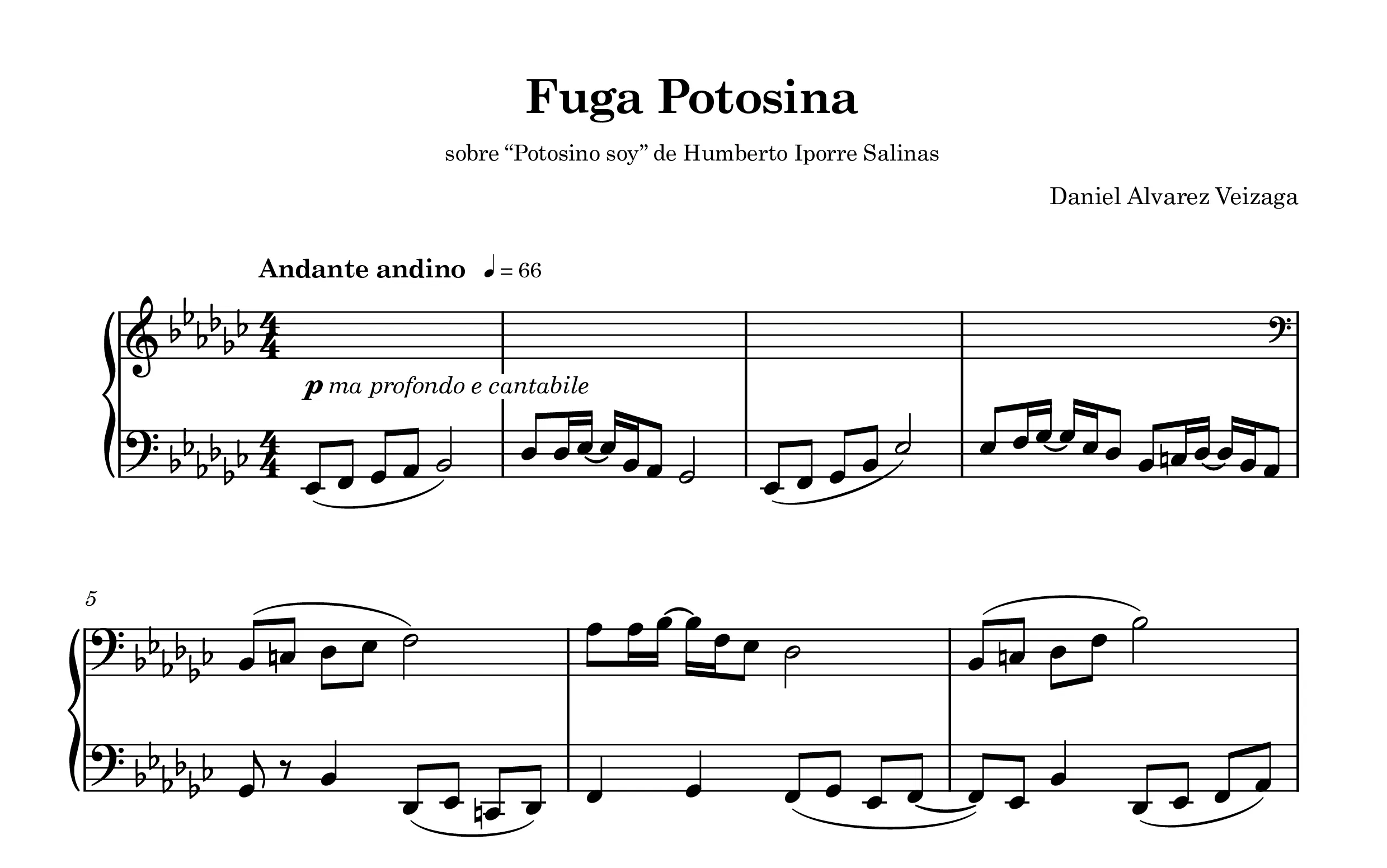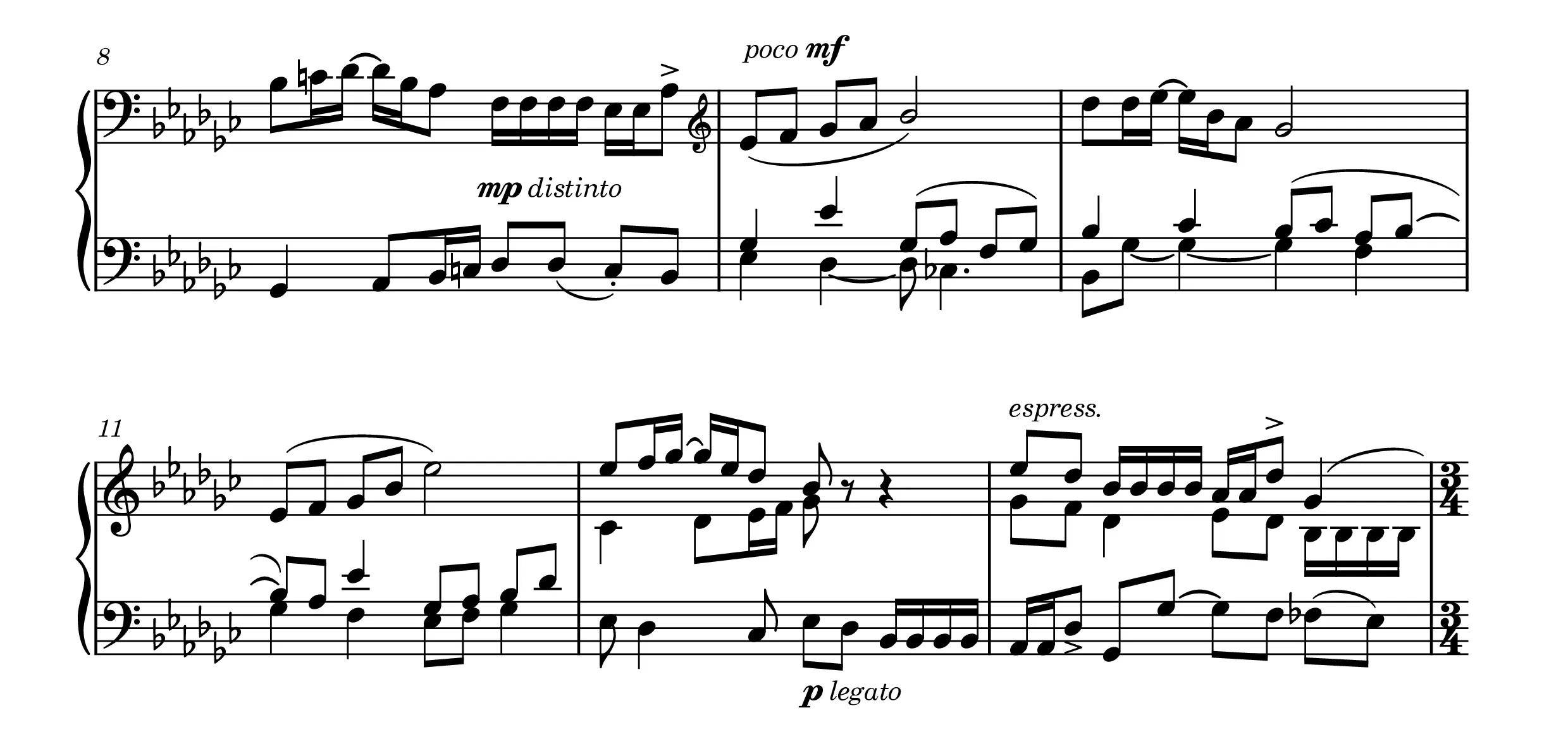

1 / 27
0:00/0:00
Solo
2021
Piano
- Program Notes
Fuga Potosina is one of the nine pieces of the "Fugas Bolivianas", each of the fugues on that album is made from a popular melody from each of the nine departments of Bolivia.
The First Double Fugue of the cycle, the “Potosina Fuga” is built on the subjects “Potosino Soy” (Andean Foxtrot) by Humberto Iporre Salinas (1925 - 1985) and an own Tinku in 7/4. The Tinku is a typical rhythmic and warrior dance from the North of Potosí.
Combine an urban melody (Potosino soy) with a more traditional and original melody (Tinku) is a constant in the nine "Fugas Bolivianas", with the aim of representing the multiculturalism on Bolivian society.
The key of E-flat minor and the almost pentatonic construction of the Subject mean that most of its notes are played on the black keys of the piano. After an exposition of the Subject with diminution (2x), near the end of the first Fugue a quote from the “Sonata in a Movement Op.4 No.2” by the potosino composer and philosopher Marvin Sandi resonates, almost invoking. It is the only Fugue of the cycle where the first subject is presented in the bass, that is, from the depths of the earth, the mines, the mountain...
The second Fugue with the Tinku develops in an energetic, violent and tense character, as does the ritual/dance with small reminiscences of the rst subject in diminution and in augmentation. In the climax, both subjects are juxtaposed to demonstrate the Double Fugue. The timbral effects on the piano are: clusters with the black keys of the piano or pentaphonic clusters, which arise from the compression of the initial subject, “Potosino soy” which also suggests a pentaphony in its essence; glissandi on black keys that are elaborated near the end of the Fugue in three different ways depicting the imperturbable wind of the Altiplano and are born from the contrapuntal resource of the diminution of the First Subject taken to the extreme.
- Performer Credits
- Grace Rodriguez Radic
- Publisher
- Editorial 3600
- External Links